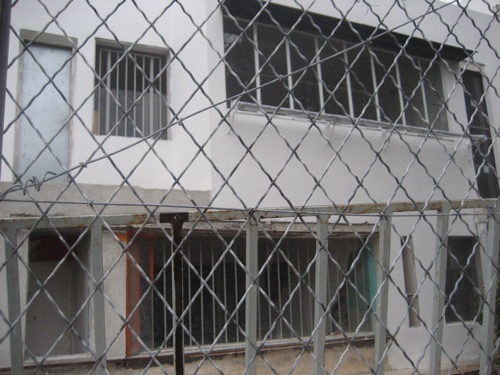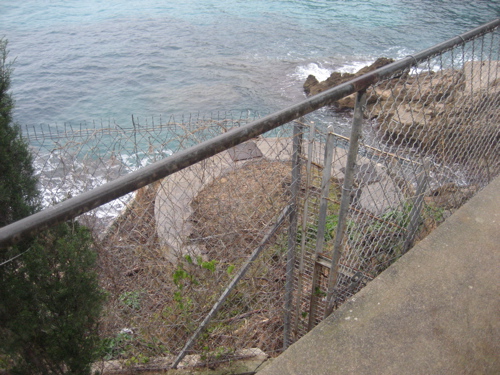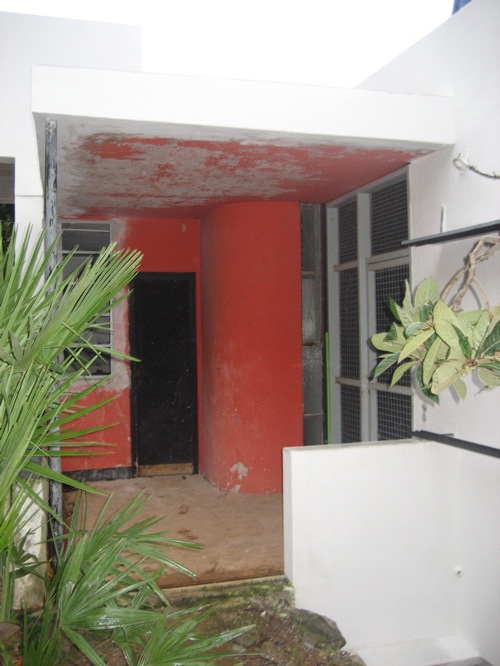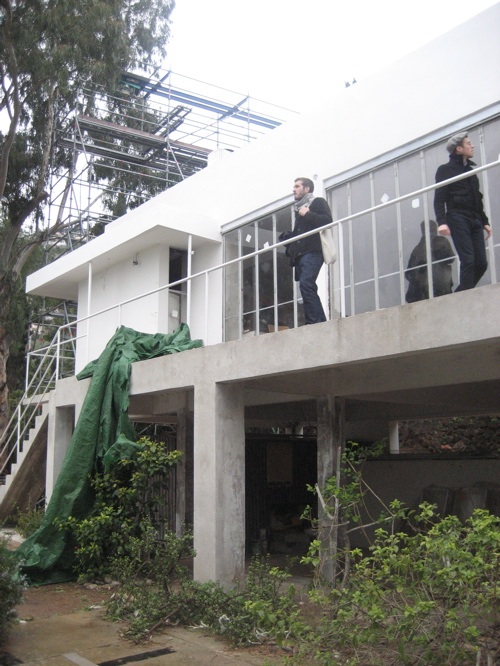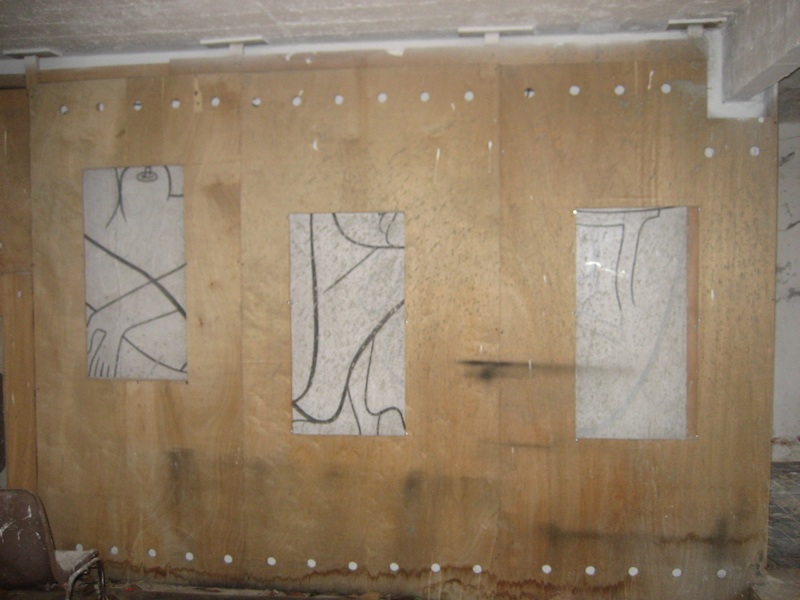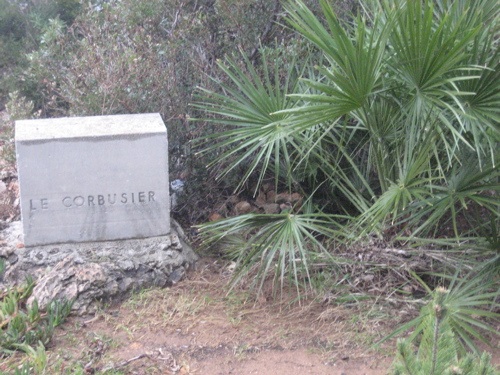L’Invitation au Voyage: Notes on E1027
A Memory is an echo of an event, altered dramatically upon reconstitution. These memories of that New Year’s Eve are porous, reshaped even by ostensibly unconnected events that occurred both subsequent to and before the experience in question.
I had prepared myself in advance of our journey by accepting there was no guarantee that I would see, let alone gain access to, the house. We boarded a train at Gare de Nice Ville in the early afternoon and on the journey out I was glad to be disconnected from all things familiar on this final day of the year. By the time we arrived at the station in Roquebrune Cap-Martin the day had become a leaden grey. Low clouds had blown in from the sea, softening all edges. The topography dictated our path and we made our way down a narrow passage to a stony cove. Walking along the Promenade Le Corbusier each of us became engulfed in our own silence. Looking across the water and up at cliffs we could see the building with which I felt familiar, having viewed it so many times in reproduction. We quickened our pace and in moments the path that led us across the stony beach and out onto a rocky headland had come to an end.
This place must have been sparsely populated when Gray chose it in 1926 for her maison en bord de mer, a couple of years after Scott and Zelda Fitzgerald had visited nearby Antibes for the first time. Peter Adam wrote in his biography of Gray that the site she chose was not overlooked and though this must certainly have once been the case, it is no longer so. In spite of this, one hears only the sea from the cliffs at Cap Martin. Standing upon the zone du silence – a circular stage of concrete below the house – one is afforded uninterrupted ocean views of the Bay of Monaco. Gazing seaward from this idyllic promontory my mind drifted and I envisaged what must have befallen this coastline at the end of WWII when nearby Menton (then occupied by the German Army and the S.S.) was bombarded by British and Free French naval forces. E1027 had also been occupied, first by Italian and then German soldiers, and after the sale of the house, which followed Jean Badovici’s death in 1956, the tenants discovered an interior scarred with bullet holes. Whether the house was a site for wartime executions remains conjecture, and there are no longer bullet holes. Nor are there any traces of the events which unfolded one night in August 1996 when the owner of E1027 was murdered in the house. Though compact and utilitarian, Gray’s house could be set in motion by the movement of the individual. Walls and screens could slide and windows disappear, tables could be linked, folded and extended, drawers and sideboards could pivot.
Though nearby, the house remained screened, this time by a network of security fencing dividing the grounds and preventing direct approach. Without difficulty we scaled the fence and, though we were alone, the residue of unknown events was tangible. It was evident that substantial restoration was underway. Much of the structure had recently been rebuilt, giving an indication of the extent of the previous neglect and dereliction. It is tragic that this luxurious project became an orphaned ruin, both neglected and willfully damaged. In my mind E1027 will be forever fused with the seaside home which is the backdrop of Virginia Woolf’s To the Lighthouse, which is abandoned and becomes derelict before being rediscovered and restored. Though the abandonment of E1027 is regrettable one wonders whether it has been a factor in it becoming a site of intrigue. Would one be so enraptured and could one ever gain access if the house was still in private hands?
“The house was left; the house was deserted. It was left like a shell on a sand hill to fill with dry salt grains now that life had left it. The long night seemed to have set in; the trifling airs, nibbling, the clammy breaths, fumbling, seemed to have triumphed. The saucepan had rusted and the mat decayed. Toads had nosed their way in. Idly, aimlessly, the swaying shawl swung to and fro. A thistle thrust itself between the tiles in the larder. The swallows nested in the drawing-room; the floor was strewn with straw; the plaster fell in shovelfuls; rafters were laid bare; rats carried off this and that to gnaw behind the wainscots. Tortoise-shell butterflies burst from the chrysalis and pattered their life out on the windowpane. Poppies sowed themselves among the dahlias; the lawn waved with long grass; giant artichokes towered among roses; a fringed carnation flowered among the cabbages; while the gentle tapping of a weed at the window had become, on winters’ nights, a drumming from sturdy trees and thorned briars which made the whole room green in summer.”[1]
Though not referring directly to her masterpiece at Rocquebrune, Gray once remarked that entering a house is like the sensation of pleasure when one arrives in a boat at a harbour, the feeling of being enclosed but free to circulate. Looking towards E1027 with my back to the sea I realised why many have remarked that the house evokes the architecture of boats. In an often reproduced monochrome photograph of the house from 1929, sailcloth membranes can be seen on the terrace’s metal railings and life preservers hang from the balcony deck. Seen from above, and, I imagine, from the water, the structure stands out from the rockface and resembles a lifeguard station. One wonders whether the aft castle of the house might have been amongst the final images that flashed before the eyes of Le Corbusier that morning in 1965. Years before this day of his death, having first visited the house, he sent Gray a letter that must have affirmed her triumph. However, whatever satisfaction Gray gleaned from those lines must have been eclipsed upon her discovering that the hand that had written them had made major interventions upon the walls, adorning that which was not intended to be embellished. Now the only murals remaining are obscured by a screen into which windows have been cut to reveal snapshots of the intertwined bodies of Le Corbusier’s Women of Algiers.
In our final moments in the garden, the rain ceased, and we stood out on a lawn, which, strangely, had been recently mown. For a few moments, breezes tore holes in the cloud and the grey turned up a tone. I felt no ghosts but the charged stillness submerging the subdued house increased with each moment. The grand narratives of E1027 are familiar to many but there must be many stories of those connected to this house that have been all but forgotten. Among them is that of a London Irish painter who lived in Monte Carlo in the 1940s. So obsessed was he with the house that he took to visiting even long after the architect had left the house in Badovici’s custody. Once, at a party thrown by the host, the painter grew reckless and, overestimating his strength, was overcome with the desire to swim far out, where no one had swum before. Looking back to the house he realised something he would utter decades later. It dawned upon him, out in the water, that he who has the greatest sense of death is also the one with the greatest sense of life, and that the former is never far from the latter. Actuality is the instance between the ticks of the watch, the void interval slipping through time, the rupture between past and future.
[1] Woolf, V.; 1927, To the Lighthouse; London, Hogarth Press.

































































































































































































































